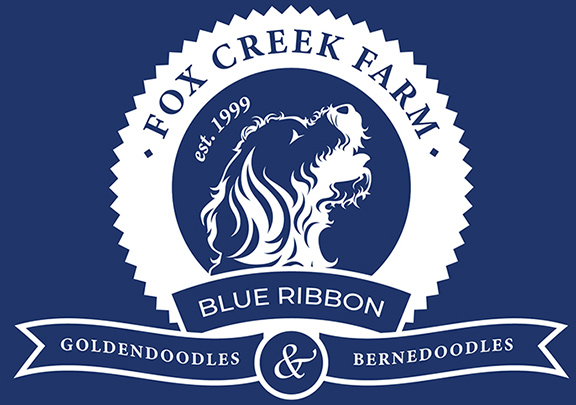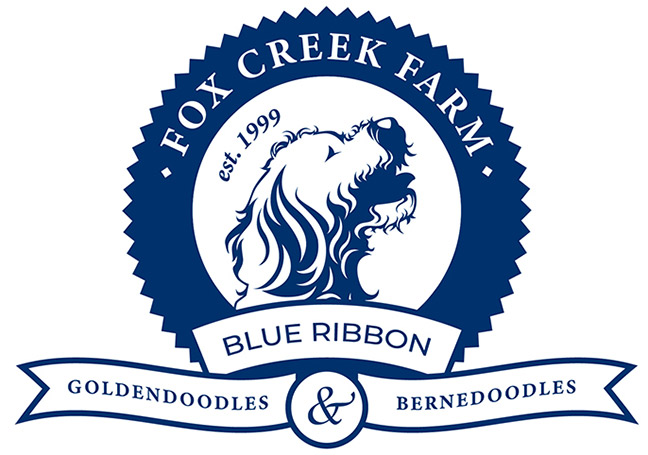
How Are Your Allergies with a Goldendoodle? Is this Breed Hypoallergenic for Everyone?
Welcome to the beautiful world of Goldendoodles, the adorable, fluffy-coated canines that have won the hearts of pet lovers everywhere. These furry companions, a cross between two beloved breeds, the clever and able-to-be-taught Poodle, along with the good-natured and faithful Golden Retriever, are utterly endearing. But why are we talking about Goldendoodles? Well, the reason is simple, yet one that touches upon a personal issue for many: allergies, particularly those caused by pet dander.
As someone who has spent many years around various dog breeds, I’ve seen the struggle of many allergy sufferers firsthand. The sorrow of developing an affection for an adorable puppy, be it a friend, or your own, only to find out you’re allergic to them, can indeed tear apart the heart. These reactions are typically due to the immune system’s response to pet dander, that tiny, nearly invisible, flaky material shed by a pet, including the dog’s saliva and skin cells. Although certain individuals can potentially exhibit indications of an allergic response to food as well. Others have allergies that are triggered by insect stings.
The question that often emerges, especially among potential pet owners dealing with allergies, is whether there’s an ideal dog breed suitable for those allergic to dogs. Enter the Goldendoodle. These bundles of joy have often been touted as hypoallergenic dogs, but what does that mean? And are Goldendoodles genuinely hypoallergenic?
Although the term ‘hypoallergenic‘ is frequently utilized in conversations pertaining to dog breeds to indicate that dogs could potentially pose fewer risks of reactions to individuals with allergies compared to others, the underlying implication is somewhat misleading. The truth is more complex than this term implies. Although touted as ‘hypoallergenic,’ this classification does not guarantee full immunity to allergic reactions but rather indicates a reduced propensity for triggering such responses. And since allergies are a personal issue that can vary dramatically from one person to the next, a breed that’s hypoallergenic for one person might not be for another.
In the quest to understand the link between Goldendoodles and allergies, you will want to read our previous blog explaining the furnishing genes and their propensities in the different generations of Goldendoodles such as the F1, F1b, F2, F2b, and Multigen. This will help to explain how these genetic variations may influence a Goldendoodle’s coat type, their shedding pattern, and by extension, their suitability for allergy sufferers. Here, we will dive more into the science of what really causes the allergic reaction to occur.
So, if you’re someone who’s ever sneezed your way through a dog visit or found yourself dealing with allergy symptoms and dog allergies that have made you question your ability to own a dog, this blog is for you. Let’s unravel the mystery together, and who knows, by the end, you may find yourself one step closer to owning the Goldendoodle you’ve always dreamed of!
 The Basics of Dog Allergies
The Basics of Dog Allergies
While understanding the intricacies of an allergic response helps in grasping why Goldendoodles may be hypoallergenic, let us first explore the biological mechanisms underlying such immune system overreactions.
Although typically acting to protect, in the case of an allergic reaction, your immune system, the very mechanism responsible for defending against harmful agents, is, in fact, the fundamental underlying instigator. Substances like dog saliva and dandruff or dander can cause allergic reactions in us by triggering our immune system. These substances, known as allergens, can trigger various symptoms in allergic individuals. This overzealous response by the immune system is what we refer to when we talk about ‘having an allergy.’
When the trees bloom and the pollen scatters, you, as an allergy sufferer, have undoubtedly endured the irritation of itchy, watery eyes streaming, an insistent runny nose you continuously need to blow, and sneezing fits that make your headache, or worse, difficulty catching your breath in a throat tightening reaction. These symptoms result from the immune system’s response to the allergen. In the case of dog allergies, the culprits are usually proteins found in a dog’s skin cells, urine, and saliva, which are often carried on pet dander.
As mentioned earlier, pet dander comprises tiny, microscopic skin flakes that animals shed. This dander can become airborne, where it is then inhaled, triggering an allergic response. The pet dander allergy symptoms can range from mild to severe for those allergic to dogs, depending on the individual’s sensitivity and the amount of dander to which the person is exposed.
But it’s not just pet dander that can cause an allergic reaction. Some people are also allergic to dog saliva. When a dog licks an allergic person, they can develop a rash or hives at the site. This is an easier allergy to contain as one can teach a puppy from a young age not to lick, therefore, avoiding the transfer of this allergen. Dog urine can also be a source of allergens.
Insect stings and certain foods can cause allergies too. Although these are not directly related to dog allergies, it’s essential to be aware of them. For example, a dog may have been in contact with a particular plant or insect, and an individual who is allergic to those might react.
It’s also worth noting that, just as people can be allergic to certain foods, pets can too. A dog may be allergic to certain foods, which can lead to them developing skin conditions or other health issues, affecting the amount of dander they shed.
Understanding these basics about allergies is crucial in understanding why some dog breeds might be better suited for individuals with allergies. Next, we’ll dive into some common misconceptions about dog allergies before we take a closer look at Goldendoodles and their hypoallergenic properties.
Common Misconceptions about Dog Allergies
Now that we’ve covered the basics of allergies let’s tackle some common misconceptions about dog allergies. Understanding these misconceptions can help us make sense of the often-complex relationship between dogs and allergy sufferers.
One common misconception is that people are allergic to dogs’ fur. Therefore, a shedding dog poses more of an allergy risk. The allergic reactions are usually caused by pet dander, which is often carried on a dog’s fur, but also found in the dog’s saliva and urine. However, it’s essential to understand that a shedding dog can spread more dander around the home, increasing the chances of an allergic reaction.
That’s why it’s not just about whether a dog sheds but more about the type of coat a dog has and how much dander they produce. Goldendoodles have a unique coat type inherited from their Poodle and Golden Retriever parents, which we’ll explore more in the next section.
The other misconception is that hypoallergenic dogs do not cause allergic reactions. As we mentioned in the introduction, the term ‘hypoallergenic’ means ‘less likely’ to cause an allergic reaction, not ‘will not’ cause a response. Everyone’s immune system reacts differently to allergens, so a breed that doesn’t trigger a response in one person might still trigger a reaction in someone else.
With symptoms resembling an allergic rhinitis to pollen (Hay Fever), dog allergies can manifest in the form of a dripping nose, fits of sneezing, and eyes that persistently irritate you. Although it is certainly critical to draw a distinction between the two concepts. Hay fever arises seasonally from airborne pollens of diverse trees, gramineous, and herbaceous plants, while dog hypersensitivities may manifest at any time and are not affected by time of year.
Depending upon an individual’s susceptibility and degree of contact with the allergenic substance in question, the character and intensity of an allergic response can vary considerably. So, while one person may only have a mild reaction to a dog’s dander, another could have a severe reaction.
Clearing up these misconceptions helps us better understand allergies, specifically dog allergies. With this information, we can now dive deeper into the world of Goldendoodles and how they interact with those prone to allergies.
The Truth About Goldendoodles and Allergies
With our newfound understanding of allergies, we can now focus on Goldendoodles. What makes these dogs unique, and why are they often associated with “hypoallergenic”?
A Goldendoodle’s potential hypoallergenic properties lie in its unique genetic mix and, consequently, its coat type. The Goldendoodle is a crossbreed of two prevalent dog breeds, the Poodle and the Goldenretriever. Each species contributes different traits, which, when combined, create the unique characteristics of a Goldendoodle.
Understanding Goldendoodles’ genetic makeup requires an understanding of some breed terminology. Goldendoodles are categorized as F1, F1b, F2, F2b, or Multigen. An F1 Goldendoodle is a first-generation crossbreed between a purebred Golden Retriever and a purebred Poodle. An F1b is a backcross and results from an F1 Goldendoodle bred with a purebred Poodle or a purebred Golden Retriever. An F2 Goldendoodle comes from crossing two F1 Goldendoodles, an F2b from an F2 Goldendoodle and a Poodle or a Golden Retriever, and a Multigen from mating two Goldendoodles, one of which has to be a deeper generation than an F1.
Why does this matter for allergy sufferers? Because genetic mix can significantly affect a Goldendoodle’s coat type and, by extension, how much they shed and, consequently, how much dander they produce. Poodles have a reputation for being hypoallergenic because of their curly non-shedding coats, which means less dander. This is directly related to the fact that Poodles carry two furnishing genes. These genes are responsible for producing long hair on the face (as opposed to the smooth muzzles found on Golden Retrievers) and are what makes a dog have a non-shed coat. When a Goldendoodle inherits two furnishing genes, they will likely shed less and produce less dander.
Goldendoodles who carry zero or one furnishing gene will shed more, as Golden Retrievers are known to be moderate to heavy shedders. As such, it’s not accurate to make a sweeping statement that Goldendoodles don’t shed. Some do, and some don’t, and it largely depends on their genetic makeup. Certain generations cannot produce any Goldendoodles with a double furnishing gene, while others only have a 50% chance for each puppy in the litter to inherit two furnishing genes. However, even if a Goldendoodle does shed, it’s usually much less than many other dog breeds. The shed hair often gets caught in the curly or wavy coat, reducing the amount of hair and dander spread around the home.
It’s also important to remember that the presence of allergens is determined by the dog’s coat type and how much allergenic protein a particular dog produces. Therefore, even two Goldendoodles of the same genetic mix might cause different reactions in allergy sufferers.
As we can see, understanding Goldendoodles and their potential as hypoallergenic dogs is a complex task. This requires an understanding of their genetics, coat type, and the personal nature of allergies. In the next section, we’ll look at what this means for potential Goldendoodle owners who are allergy sufferers.
Goldendoodles and Allergy Sufferers
With their charming personalities and adorable looks, it’s easy to see why many people are drawn to Goldendoodles. But if you’re an allergy sufferer, there’s much more to consider than the dog’s appearance and temperament. It would be best to consider whether the breed suits your allergy sensitivities.
Goldendoodles’ unique coats, typically curly or wavy, can trap dander, reducing its spread around the home. This factor and the likelihood of them having the ‘no shed genes’ often means less dander and saliva being spread around, which can benefit allergy sufferers.
Unfortunately, hypoallergenic Doodles may provoke unfavorable reactions despite their name. Some of the responses reside within the animal’s saliva, urine, and dead skin cells rather than its fur alone. Although dogs marked as ‘hypoallergenic’ are unlikely to trigger an allergic response, they are not guaranteed to be completely allergen-free. Partly a result of individual biochemistries, allergic responses are uniquely personal and highly variable across different constitutions.
An individual susceptible to the allergen might manifest a severe allergic response upon exposure to even a minute quantity of the antigenic dander. In contrast, another individual might be exposed to lots of dander and experience a mild or no response. This variation underscores the importance of personal interaction and compatibility with a dog breed. It is also important to mention that living with a dog that causes a mild allergic reaction will likely, in time, allow the person to build an immunity to that allergy. This is similar to how receiving allergy shots works to reduce the allergic response. However, this is likely not a viable option for those who have a severe response to interactions with a dog.
Getting a Goldendoodle: Things to Consider
Given the personal nature of allergies, if you’re considering getting a Goldendoodle and you’re known to have allergies, there are a few steps you can take.
One crucial step is to spend time with the breed before committing. This way, you can assess your reactions to the dog directly. However, remember that you may wait to react. Allergic reactions can sometimes take a few days to appear, so don’t rush the process.
Be aware that if the breeder has other types of pets around the puppies, you may get a false reaction. The other animals could trigger your allergies, and you might mistakenly believe you’re allergic to the Goldendoodle. It’s best if you can interact with the Goldendoodle in a controlled environment, free from other potential allergens.
In the next section, we’ll explore medical tests, like blood tests and allergy tests, which can also provide a more comprehensive understanding of your allergies and assist you in making an informed decision about whether a Goldendoodle is the right breed for you.
Medical Testing for Allergies
If you’re a dog lover who also happens to be an allergy sufferer, navigating the world of pet ownership can sometimes be challenging. However, medical science offers solutions that can provide clarity. Blood and allergy tests can offer valuable insights into your allergies, helping you understand what triggers your symptoms and to what extent.
Blood tests, for instance, can measure the number of specific antibodies in your bloodstream. These antibodies, known as IgE antibodies, are produced by your immune system which is responding to allergens. A high level of IgE antibodies corresponding to a specific allergen could indicate an allergy.
Similarly, allergy tests, often performed by allergists, can help determine whether you’re allergic to dogs. The most common allergy test is the skin prick test, where small amounts of suspected allergens, including pet dander, are applied to your skin using a tiny needle. If you’re allergic to one of the substances, you’ll develop a raised bump or a hive at the test location on your skin.
Both tests can provide valuable insights for potential dog owners. However, they could be better. Blood tests may not be as sensitive as skin tests, and allergy tests can sometimes produce false positives or negatives. Moreover, they can’t predict the severity of an allergic reaction, but they can provide a more comprehensive understanding of your allergies which can be helpful when considering whether to get a Goldendoodle.
Choosing a Goldendoodle: Final Thoughts
The decision to get a Goldendoodle if you have allergies boils down to your reaction to the specific dog and your willingness to manage potential allergy symptoms. Each Goldendoodle is unique, and even within this breed known for its hypoallergenic properties, individual dogs may produce different amounts of allergens.
The key takeaway is that while Goldendoodles are often an excellent choice for individuals with allergies due to their specific coat type and genetics, it’s crucial to remember that “hypoallergenic” does not mean “allergen-free.” Even hypoallergenic dogs can cause allergic reactions in some individuals. Each person’s response to a dog will be unique, and what works well for one person may not work well for another.
The world of Goldendoodles and allergies is complex. Still, the joy of finding a compatible furry friend is well worth the journey. By understanding the breed’s genetic makeup, spending time with the breed before adoption, and conducting allergy tests, you can make an informed decision and find an excellent companion in a Goldendoodle.
In the end, the love and companionship of a Goldendoodle can be an excellent addition to your life. With careful consideration and preparation, even allergy sufferers may be able to enjoy the joys of Goldendoodle ownership.






